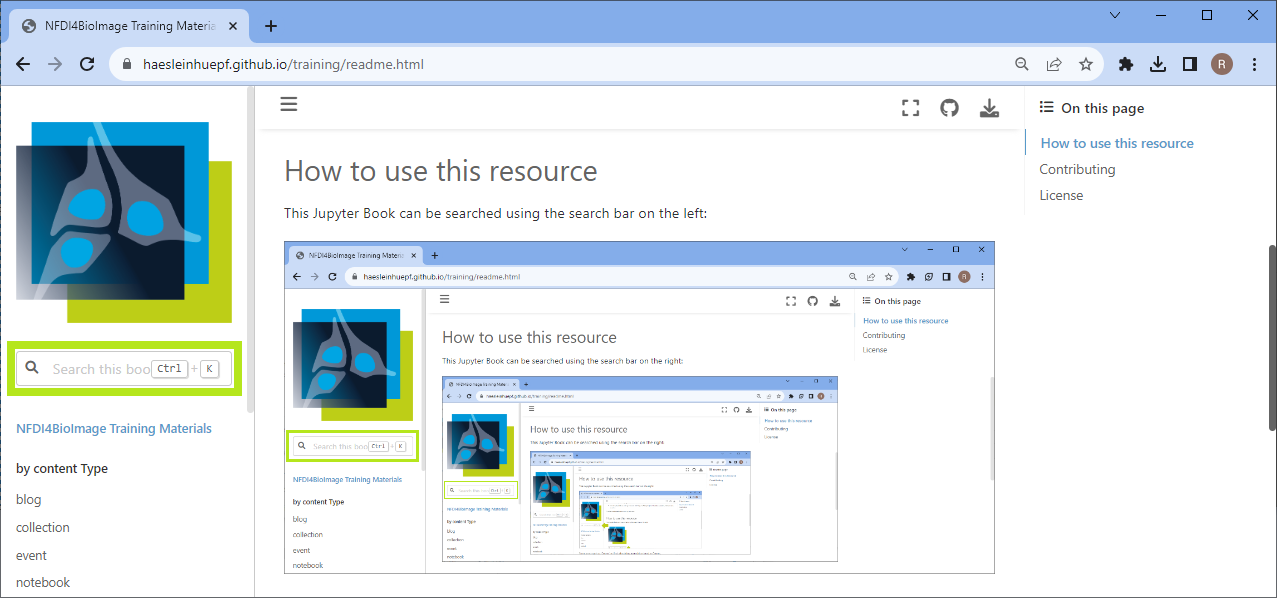NFDI4BioImage Training Materials#
This Jupyter Book contains 843 links to training materials in the context Research Data Management for Bioimaging / Microscopy Data and Bio-image Analysis and has been updated 2025-11-18.
This is a preliminary / experimental search index allowing us to explore how such a database could look like. We follow the principle release early, release often and aim at having a functional prototype of the search index at any time. We will use this resource to
explore what kind of meta-data we need to collect for training materials
which other online resources exist providing links to training materials
how we can automatically collect links to training materials
how we could potentially inject our list of materials into the other resources
how to collect links to training materials following the FAIR principles (findable, accessible, interoperable, reusable)
Feedback and contributions are very welcome, e.g. as github issue.
Most downloaded training materials in the last week#
We trace download statistics of some Microscopy / Research Data Management / BioImage Analysis records on zenodo.org. These were the three most downloaded records recently observed.
Bio-image Data Science Lectures 2025 @ Uni Leipzig / ScaDS.AI by “Haase, Robert” (210 downloads), licensed CC-BY 4.0
Bio-image Data Science Lectures 2025 @ Uni Leipzig / ScaDS.AI by “Haase, Robert” (210 downloads), licensed CC-BY 4.0
Bio-image Data Science Lectures 2025 @ Uni Leipzig / ScaDS.AI by “Haase, Robert” (210 downloads), licensed CC-BY 4.0
How to use this resource#
This Jupyter Book can be searched using the search bar on the left:

Enter terms such as ‘Omero’ to find all training materials related to Omero.
Contributing#
Contributions are welcome. Consider adding your favorite training resources so that we can make sure that they are findable and reusable. You find instructions in how to contribute on the contributing page.
License#
All contents of this Jupyter book and the corresponding Github repository are licensed CC-BY 4.0, unless mentioned otherwise.
Acknowledgements#
This project is funded by the Deutsche Forschungsgemeinschaft (DFG, German Research Foundation) under the National Research Data Infrasstructure – NFDI 46/1 – 501864659.
R.H. acknowledges support by the Deutsche Forschungsgemeinschaft under Germany’s Excellence Strategy—EXC2068–Cluster of Excellence Physics of Life of TU Dresden.
